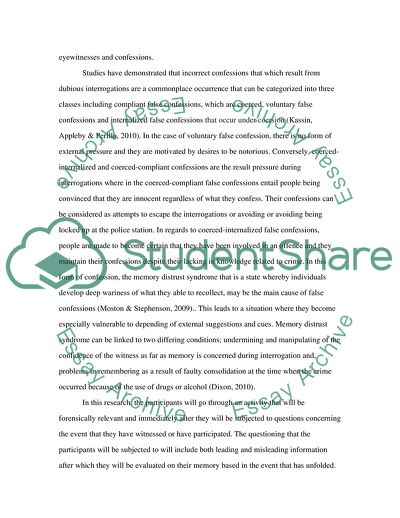Cite this document
(The Impact of Interrogations on the Testimonies of Eyewitnesses and Research Proposal Example | Topics and Well Written Essays - 1250 words, n.d.)
The Impact of Interrogations on the Testimonies of Eyewitnesses and Research Proposal Example | Topics and Well Written Essays - 1250 words. https://studentshare.org/psychology/1880677-research-paper
The Impact of Interrogations on the Testimonies of Eyewitnesses and Research Proposal Example | Topics and Well Written Essays - 1250 words. https://studentshare.org/psychology/1880677-research-paper
(The Impact of Interrogations on the Testimonies of Eyewitnesses and Research Proposal Example | Topics and Well Written Essays - 1250 Words)
The Impact of Interrogations on the Testimonies of Eyewitnesses and Research Proposal Example | Topics and Well Written Essays - 1250 Words. https://studentshare.org/psychology/1880677-research-paper.
The Impact of Interrogations on the Testimonies of Eyewitnesses and Research Proposal Example | Topics and Well Written Essays - 1250 Words. https://studentshare.org/psychology/1880677-research-paper.
“The Impact of Interrogations on the Testimonies of Eyewitnesses and Research Proposal Example | Topics and Well Written Essays - 1250 Words”. https://studentshare.org/psychology/1880677-research-paper.


